Ugandan midwife invents specialized baby mattress
Apr 30, 2019
“I used my personal savings to come up with this innovation and I have reached a level where my innovation has been globally patented," says Jacqui Nancey Sebuyira.

INVENTION
Jacqui Nancey Sebuyira is a qualified midwife with a Bachelor of Science in Midwifery from Thames Valley University where she graduated in 2005. She trained as a midwife at Chelsea and Westminster Hospital in the same year. Currently, she works as a midwife at Central London Hospital.
After her Senior Six studies in Uganda, she moved to United Kingdom in 1989 to find a job that could help her raise money to further her education.
"My intention was to study but when I reached UK, I saw an opportunity of working first so that I get some money for tuition. I, therefore, started working as a nanny in a home and this helped me raise money for fees," she says.
During her work as a nanny, Sebuyira noticed that most of the babies aged under six months would face problems breathing at night during their sleep.
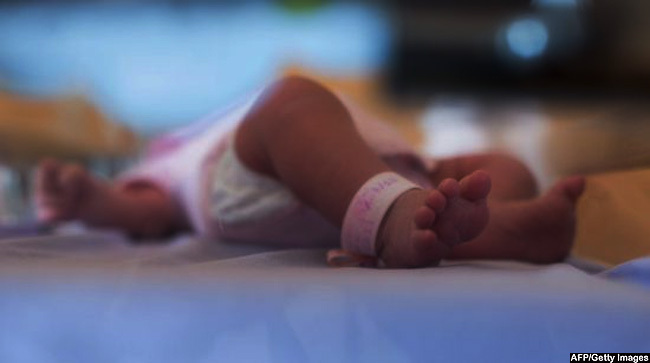
As she pursued her nursing studies, she started conducting research on what causes the difficulty in breathing for newborn babies, which results into regurgitation and sometimes the Sudden Death Syndrome -- an umbrella term used for the many different causes of cardiac arrest in young people.
After a period of vigorous research, Sebuyira found out that the main cause of the problem was the nature of flat mattresses that babies sleep on.
She says that when a baby sleeps on a flat mattress, compresses the baby's trachea, hence blocking the smooth passage of air, which causes difficulty in breathing and regurgitation.
The baby mattress
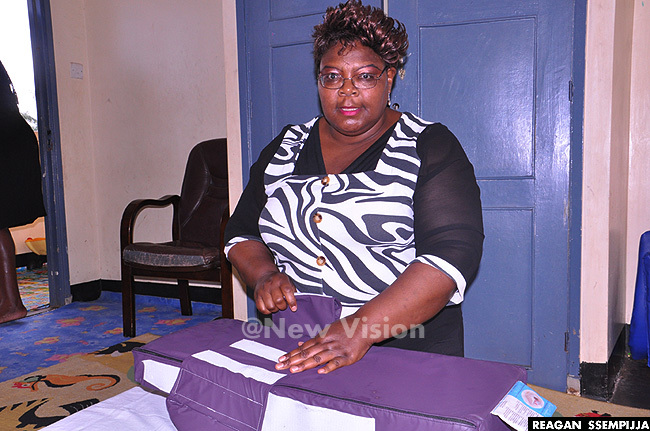
After identifying the problem, Sebuyira came up with a baby ergonomics design of how a baby mattress should be.
Using the unique design, she innovated a raised soft pillow on one end of the mattress. The pillow is inclined to create a clear passage in the trachea so that the baby can breathe well.
She also created a soft mattress with special foam made for babies, with a depression to enable the baby feel comfortable when they are sleeping, as well as to reduce the flatness of the mattress.
The concept is likened to how the baby is positioned when inside the womb.
Naturally, a baby is supposed to lay in a neutral position just as they are positioned in a mother's womb so that they do not bring out fluids from their stomachs, which may cause complications and death.
"The baby mattress I made specifically solves this problem and everything to do with baby breathing," says Sebuyira.
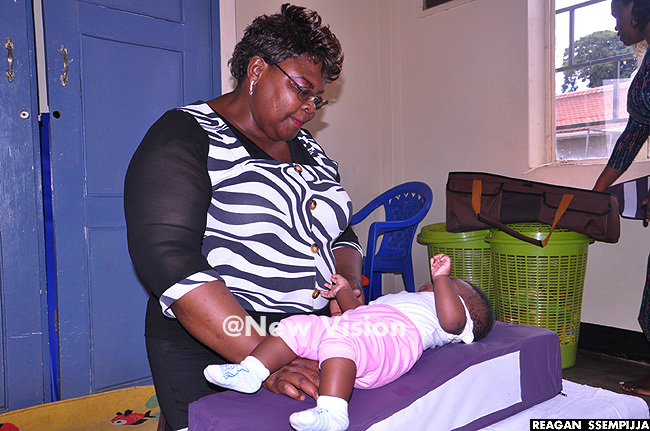 Sebuyira says she wants to domesticate her innovation in Uganda
Sebuyira says she wants to domesticate her innovation in Uganda
It has taken 20 years for her innovation to pass all international tests for baby products in the UK.
When Sebuyira came to Uganda in 2015 to try and implement the use of her new invention, she first volunteered as a midwife at Mulago Hospital. While doing her job there, she realized there was no proper mechanism of how newborn babies would be made to sleep and rest comfortably.
She, therefore, discussed her innovation with the doctors at the facility, which is a national referral.
"My idea was adopted and today, Mulago Hospital has so far taken up 15 of my specialized baby mattresses.
"In the UK, each mattress costs £160 (about sh770,000), but we know this is expensive for our local consumers here. So we are working out a plan on how to reduce the price for local consumers," she adds.
For now, production of the mattresses is done in the UK. The unit cost of production for each mattress is valued at £70 (about sh340,000).
Recently the innovation was certified by Intertek Group plc, a multinational assurance, inspection, and product testing and Certification Company headquartered in London.
"They certified my product and I also acquired patent rights for the product, which adds on our credibility globally," says Sebuyira.
'Innovation should benefit my country'
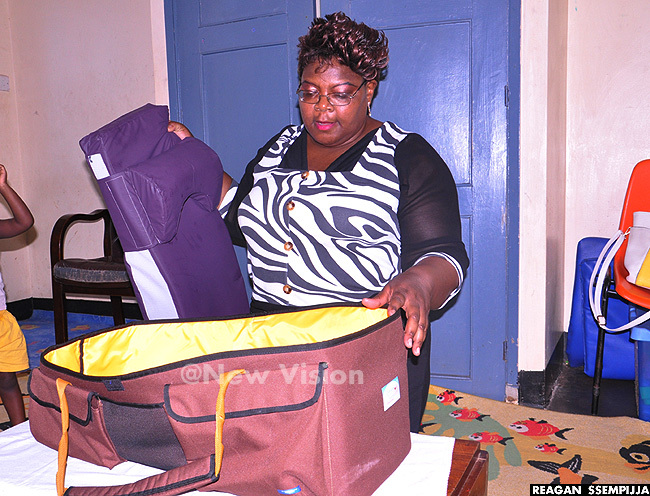 If you want to carry your baby, you can place the mattress inside this fitting bag . . .
If you want to carry your baby, you can place the mattress inside this fitting bag . . .
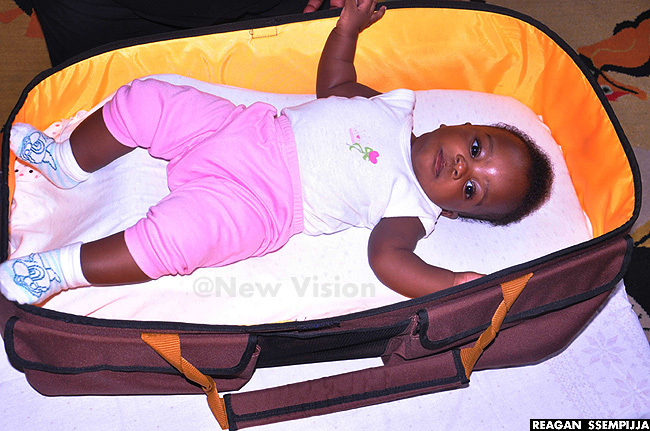 . . . then gently place the baby inside
. . . then gently place the baby inside
Sebuyira says she wants to domesticate her innovation in Uganda. Her plan is to get partners to set up a factory in Uganda and start large-scale commercial production of the mattresses.
She says that since she is trying to produce the mattresses on a large scale, she needs partners to pool the necessary resources.
"I used my personal savings to come up with this innovation and I have reached a level where my innovation has been globally patented. This is an innovation by a Ugandan and I hope partners, especially Government, can come on board and we make this innovation a reality."
According to her, several organisations in the UK were interested in buying her patent instead of partnering with her. "That is how many people lose out on their innovations. Patenting is the only way to secure an innovation for a lifetime," she says.
"I want Uganda to be the exporter of these mattresses. I am a Ugandan first and this innovation should benefit my country.
"In the near future, we hope to expand production so that we cater for adults, especially when our factory opens. For instance, I recently got information that some cancer patients usually face similar problems of breathing, so they may need this kind of mattress."
